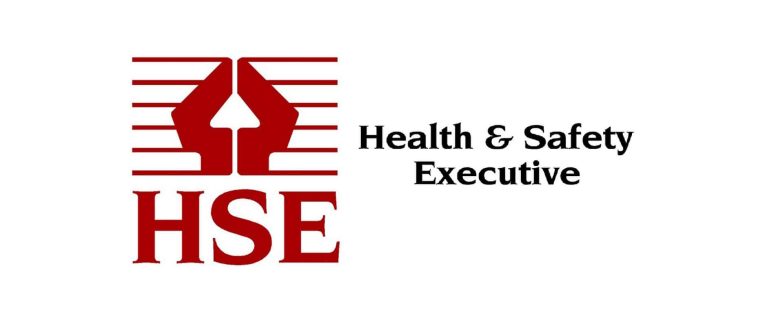
Blog
HSE Workplace Fatality Statistics
Author: Mike Clough
Date Posted: Monday 9th September 2019

0161 723 2000
8AM to 5PM

Author: Mike Clough
Date Posted: Monday 9th September 2019

First of all, when talking about health and safety at work, and particularly the sort of statistics referred to in this blog, it’s very important to remember that these are not just statistics – literally every case here represents a real and regrettable loss of life and a trauma to the family and friends of a real person who lost their life at their workplace. My sympathies go out to all concerned, and I hope that those who read on will understand that this blog is not intended in any way to diminish that.
The HSE recently released its annual statistics on workplace fatalities, revealing that 147 workers were killed in 2018-19 in workplace accidents.
As a health and safety practitioner, there is a need to look at this information dispassionately and to try to learn from it. For the health and safety community at large, we must try to use this information to improve and to try to prevent such incidents from happening in the future.
I genuinely believe that the UK government and all employers should aim to make our country a place where nobody dies in a workplace incident and at the same time, it’s important to acknowledge how much good work is done in the UK to ensure that we have some of the lowest workplace injury and fatality rates in the world.
Analysing these statistics from Japanese Knotweed Solutions’ point of view, it is significant to note that our own works intersect significantly with some of the highest-risk sectors in the UK economy – particularly Construction but also Agriculture, Forestry and Fishing. JKSL do a lot of work on construction, civils and other development sites, but we also work on agricultural land and we carry out arboriculture, vegetation clearance and other related activities. While we don’t deal directly with fisheries, a lot of our works on rivers, canals and other watercourses intersect directly with aquatic habitats – with the attendant risks.
In addition, it is important for us to consider that where our works are on construction sites, or where we are carrying out mechanical remediation of invasive plant species, there are significant hazards present which represent the main kinds of fatal accidents for workers – particularly falls from height and moving vehicles.
It is also important for us, as an age-inclusive employer, to note that even though in health and safety practice, younger people are generally seen as being at greater risk of accidents in the workplace, the rate of fatal injuries among the 55-59 age group is more than double the rate for those aged 16-34. As workers get older, that rate increases hugely, with the accident rate for workers aged 60-64 being more than double the average rate, and for workers over 65, this doubles again – to four times the average and almost eight times the average for workers aged 16-34.
Interestingly, there are two particular categories of work-related deaths which are recorded but which aren’t included in this report – both of which are significant for JKSL.
Asbestos is a major health hazard, causing cancers and other lung problems. Even though the use of asbestos-containing materials in construction was outlawed in the UK in 1999 (following a partial ban in 1985), asbestos-containing materials continue to be widespread – particularly in schools where it is thought that over 90% of school buildings in England contain asbestos. Asbestos is also commonly found on demolished or derelict sites and is also prevalent where fly-tipping is common – areas where Japanese knotweed is also particularly rife.
Mesothelioma is a specific form of cancer caused by asbestos exposure, with a long “lead time”. It can take up to 40 years for cases of mesothelioma to develop following asbestos exposure. This form of cancer caused 2,523 deaths in 2017, with similar numbers predicted each year until numbers are expected to decline after 2020.
It is also significant to note that the gender distribution of mesothelioma cases – with 2,084 deaths in males and 439 in females. Males continue to be at higher risk of developing mesothelioma, with just under 2,000 new cases assessed in 2017 in males and just under 250 in females.
The other category of fatality which is not included in the HSE statistics is that of road traffic accidents, where 529 people were killed in collisions involving someone driving at work. Obviously, this is a stark comparison with the 145 fatalities across all of the UK’s workplaces, making road traffic accidents by far the largest single cause of death related to the workplace.
Comparing data on non-fatal accidents in the workplace with the statistics for road traffic accidents, we find that traffic incidents are much more likely to result in fatalities – with the total number of work-related road casualties in 2016 totalling 44,048 – around one tenth the number of workplace injuries, but obviously resulting in a much higher total number of fatalities.
This is perhaps unsurprising, given the factors of speed and the size and weight of motor vehicles – however, when digging deep on the statistics, work-related road traffic accidents actually resulted in the relatively small figure of 18 passengers and 84 drivers who were actually the person at work when the incident happened. 427 of the 529 killed in collisions involving a driver or rider driving for work were other road uses (including cyclists and pedestrians).
While we can’t influence the statistics, and we can’t do anything for the real people they represent, analysis like this is important for industry and the UK as a whole in its goals to reduce and prevent workplace accidents.
Chris Oliver
Operations Manager